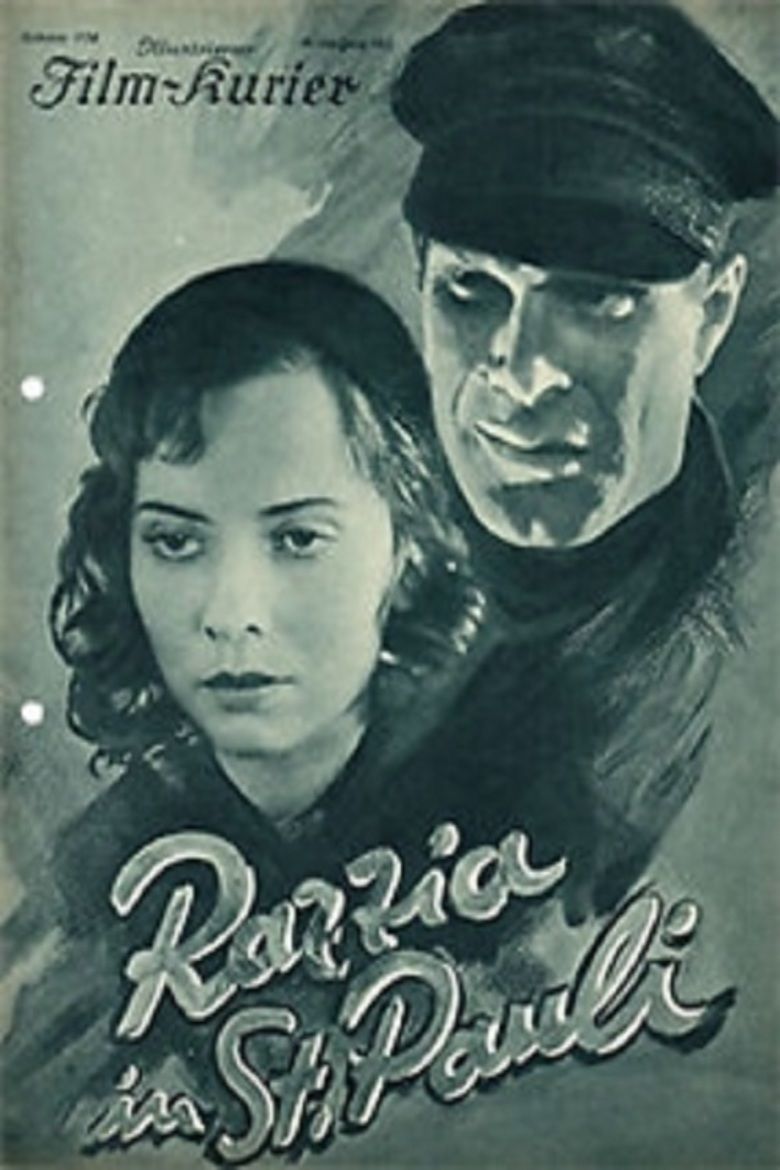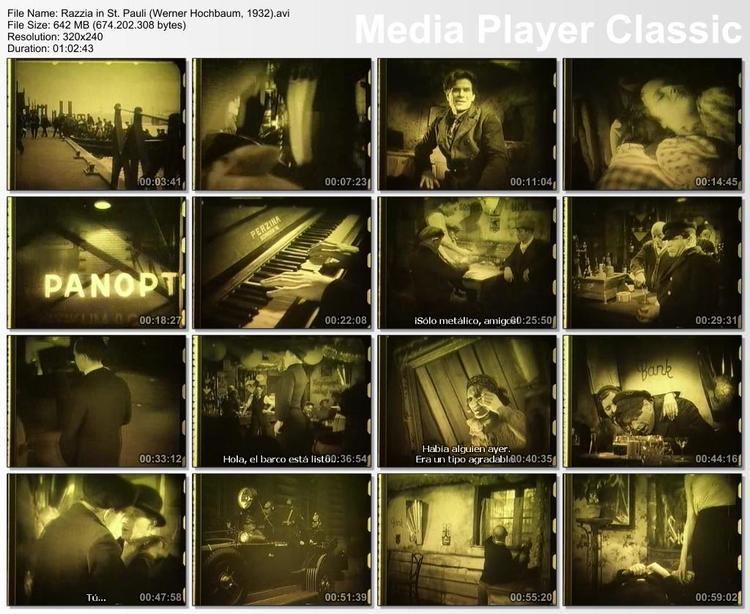Razzia in St Pauli
7.2 /10 1 Votes
Director Werner Hochbaum Budget 8,000 USD Genre Drama Country Weimar Republic | 7/10 IMDb Writer Werner Hochbaum Produced by Justin Rosenfeld Duration Language German | |||||||||||||||||||||||||||||||||
 | ||||||||||||||||||||||||||||||||||
Release date May 20, 1932 (1932-05-20) People also search for Suburban Cabaret, Drei Unteroffiziere, The Eternal Mask, Man spricht uber Jacqueline | ||||||||||||||||||||||||||||||||||
Razzia in St. Pauli is an early German sound film (1932) of the end of the Weimar Republic era. It illustrates both the powerlessness of the ordinary worker as well as an intimate portrait of the joys and sorrows of a small group of people in the harbor section of Hamburg.
Contents

Illustrates both the powerlessness of the ordinary worker as well as an intimate portrait of the joys and sorrows of a small group of people in the harbor section of Hamburg.
Synopsis
A social drama plays out in the harbor area of Hamburg: Ballhaus-Else, a prostitute, lives together with her boyfriend Leo, a peaceful bar musician, in St. Pauli. One day, Matrosen-Karl, a thief on the run, finds a hideout at Elses. She is fascinated by the man, who promises her a more exciting and better life. Together they want to leave Hamburg. Leo – who feels inferior to Karl – lets them go with a heavy heart. But then Karl gets arrested after a fight between the underworld and the police in the Kongo-Bar, and Else returns to Leo – and her hopeless everyday life.
The most important characteristic of this film is the use of local people, including those of somewhat gritty character, as extras playing parts that they actually lived at that time.
Production
Orbis-Film GmbH, Berlin.
Actors
Gina Falckenberg (Ballhaus-Else), Friedrich Gnas (Karl Burmeister, known as Matrosen-Karl), Wolfgang Zilzer (Musician Leo), Charly Wittong (Charly, the Folk singer), Max Zilzer (Tavern Keeper), Kurt Appel, Kate Huter, Friedrich Rittmeyer, Members of the Vice Squad of the City of Hamburg as well as girls and gritty characters of the St. Pauli area.
Film Studio
Vera-Filmatelier Hamburg. Exterior location: Hamburg. Runtime and film length: 74 min, 2016 m. Format: 35mm, s/w, 1:1.33, Celluloid sound film. Official Certification: 11 April 1932, B.31364, Jv. / DP: 7 December 1933, O.31364, First Official showing: 20 May 1932, Berlin (U.T. Kurfurstendamm). Banned on 7 December 1933 by the Nazi Film Review Office.
References
Razzia in St. Pauli WikipediaRazzia in St. Pauli IMDb Razzia in St. Pauli themoviedb.org
